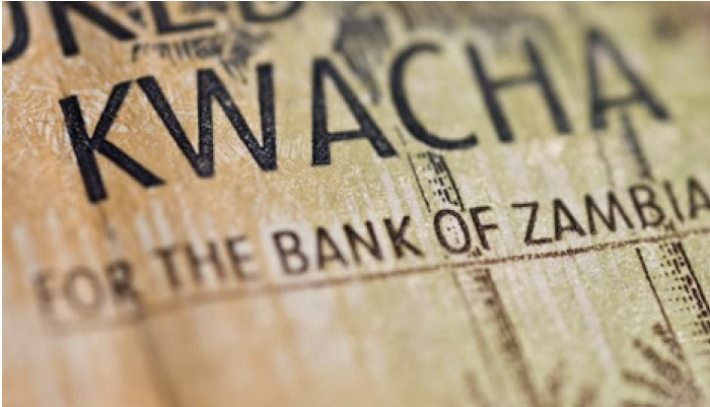In its first rate decision meeting of 2020, the central bank in Africa’s red metal hotspot stood pat on rates keeping its benchmark rate at 11.5% while leaving the cash reserve requirement at 9%. It is about a dry point of construction that the Monetary Policy Committee is alive to risks to inflation exacerbated by energy risks. However the governor, Dr. Denny Kalyaya echoed need for fiscal sustainability. Fiscal pressures have persisted with preliminary fiscal deficit estimated at 8.2% on a cash basis versus a targeted 6.5%. The 2020 target of 5.5% seems a mirage prima facie given deepening fiscal risks. For a long time, the central bank communique quarter on quarter reflects a bottoming with very little latitude for stimulus to ignite growth in a suppressed environment. It is unfair to expect the central bank to fix fiscal yet political risks that result in balance sheet vulnerabilities manifesting in instability in market variables.
Monetary policy is not a tool for cleaning political decisions. Former Bank of England and central banker of the year 2019 Mark Carney and his US Fed counterpart Jerome Powell on the sidelines of the Jackson Hole last year said something very striking which the world grapples with. The two governors categorically stated that half the fiscal challenges the world faces are as a result of political decisions by leaders and is unfairly burdened on central banks to fix using monetary policy. This was a statement encapsulating trade war effects between China and United States which Trump keeps canning the US Fed to fix through slashing rates and easing monetary policy for tariffs decisions made by the fiscal side of governments. This scenario is not so far fetched in Africa and Zambia to be specific.
Debt stock still the biggest risk. On the local front, Zambia grapples with rising debt off course for infrastructure spend whose mismatch between cash flow benefits kicking in and debt service manifesting in debt service pressure. The copper producers debt stock stands at $11.2billion with latitude for further widening when the airport infrastructure under a yard ($1billion) and the highway bridges actualizes and sits on the state balance sheet. The MinFin head Dr. Bwalya Ng’andu in his economic address flagged about $7billion of undrawn credit lines which he was in talks with the legal’s on the ramifications of cancellation as part of austerity. Compounding the effects of feeble fiscal side was energy risks as a consequence of climate change effects that weighed business pulse.
Maybe sliding into recession could allow for reignited growth. The monetary policy communique is a vivid indication of failure in fiscal stimulus efforts to benefit the private sector as this is the solution to igniting growth. We are convinced beyond reasonable doubt despite the view being controversial that Zambia may have to slide into recession for a fresh come back through potential tax cuts as that is the easiest way to inject liquidity to the private sector that should be tasked to create employment, boost value chains and reignite growth in an anemic growth environment. Its is easier to have a tax compliance discussion in a tax friendlier environment that taxing entities in economic turbulent landscapes as eventually there will be nothing to tax. It will be very difficult to grow the economy above 2% in 2020 despite the 3% MinFin target and 3.7% for 2021 given the existing risks that include external debt service, hydrology risks leading to power bottlenecks and a weak manufacturing base. The biggest drivers of growth in this quagmire are the private sector but the question is, what should the fiscal side do for them to guarantee growth? Tax them less to allow them drive the wheels of growth. Angola and Nigeria have slid into recessions after aligning to crude fundamentals and have since reignited growth.
Understated inflation forecasts. Inflationary pressure is high and do not believe that a better maize harvest will ease the pressure significantly as the biggest pressure point will be cost push effects of currency depreciation which will stem from sanguine dollar demand appetite for petroleum, agriculture and central bank foreign currency purchases as it shores up reserves. Despite projections on bumper harvests, there is a likelihood of missed estimates given some silent hurdles in fertilizer input distribution and delivery of faulty seed in some areas coupled with army worm infestation. The Kwacha could have drawn a line in the sand for now until dollar obligations fall due which the central bank has latitude to tame vicious slides by hiking the statutory reserves but this will constrict already suppressed growth. Uncertainty in the inflation environment correlates with uncertainty in monetary policy posture.
Central bank independence test passed. Inferring from the level of domestic arrears, central bank independence can be lauded for not printing notes to pay off suppliers which would be the easiest way out. A K2billion allocation in the 2020 budget against a K26.2billion arrears stock translates to 13 years of dismantling assuming zero growth in stock.
Vague dollar debt redemption strategy. With all the noise in the economy bond holders are getting nervous by the day especially for $750million falling due in 2022 whose chances of refinancing using the international capital markets through a fourth Eurobond issuance is farfetched with a feeble credit and sovereign rating.
The Kwacha Arbitrageur


1 Comment
Great content! Super high-quality! Keep it up! 🙂